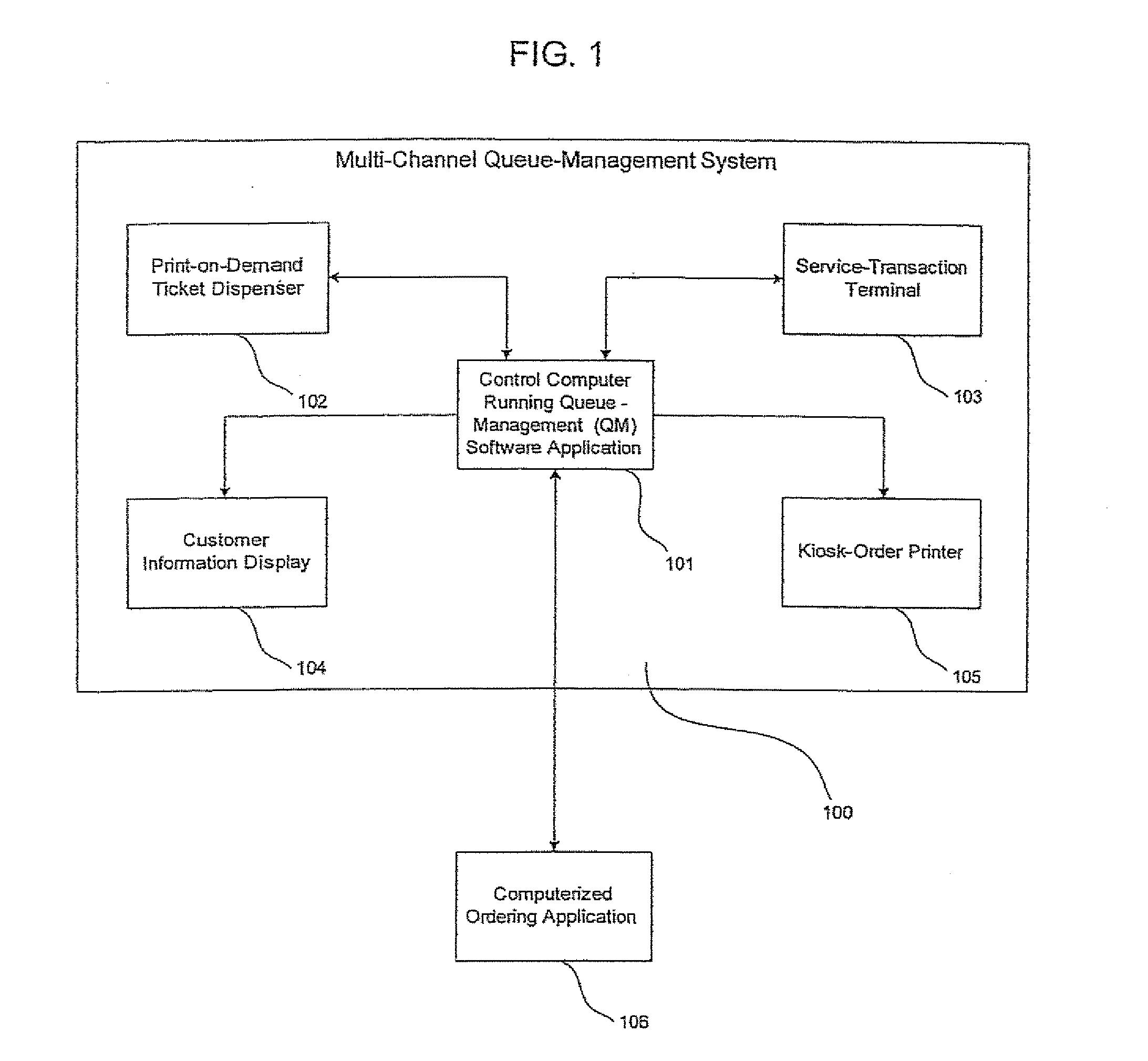System for queue and service management
a service management and queue technology, applied in the field of service queue management, can solve the problems of uncertainty for customers, customer frustration, and often little understanding of the length of the queue, and achieve the effect of reducing the number of queues
- Summary
- Abstract
- Description
- Claims
- Application Information
AI Technical Summary
Benefits of technology
Problems solved by technology
Method used
Image
Examples
Embodiment Construction
[0032]Referring to the accompanying drawings, an automated call-forward queue-management system in accordance with the present invention preferably (a) creates a single service queue for all customers regardless which ordering channel they use, e.g. whether they are placing an order at the counter or though a computer or mobile device, (b) measures service levels across all ordering channels, capturing all critical service-level parameters in real time, so that the retailer can more effectively and efficiently ensure the delivery of service to the satisfaction of customers, and (c) creates realistic service-level expectations for customers. By simultaneously performing these actions, the present invention increases sales, reduces costs, and maximizes the benefits from computerized ordering systems.
[0033]Sequential queue numbers preferably are assigned to all service requests by customers on a first-come-first-served basis, whether the customer wishes to order at the counter or throu...
PUM
 Login to View More
Login to View More Abstract
Description
Claims
Application Information
 Login to View More
Login to View More - R&D
- Intellectual Property
- Life Sciences
- Materials
- Tech Scout
- Unparalleled Data Quality
- Higher Quality Content
- 60% Fewer Hallucinations
Browse by: Latest US Patents, China's latest patents, Technical Efficacy Thesaurus, Application Domain, Technology Topic, Popular Technical Reports.
© 2025 PatSnap. All rights reserved.Legal|Privacy policy|Modern Slavery Act Transparency Statement|Sitemap|About US| Contact US: help@patsnap.com



